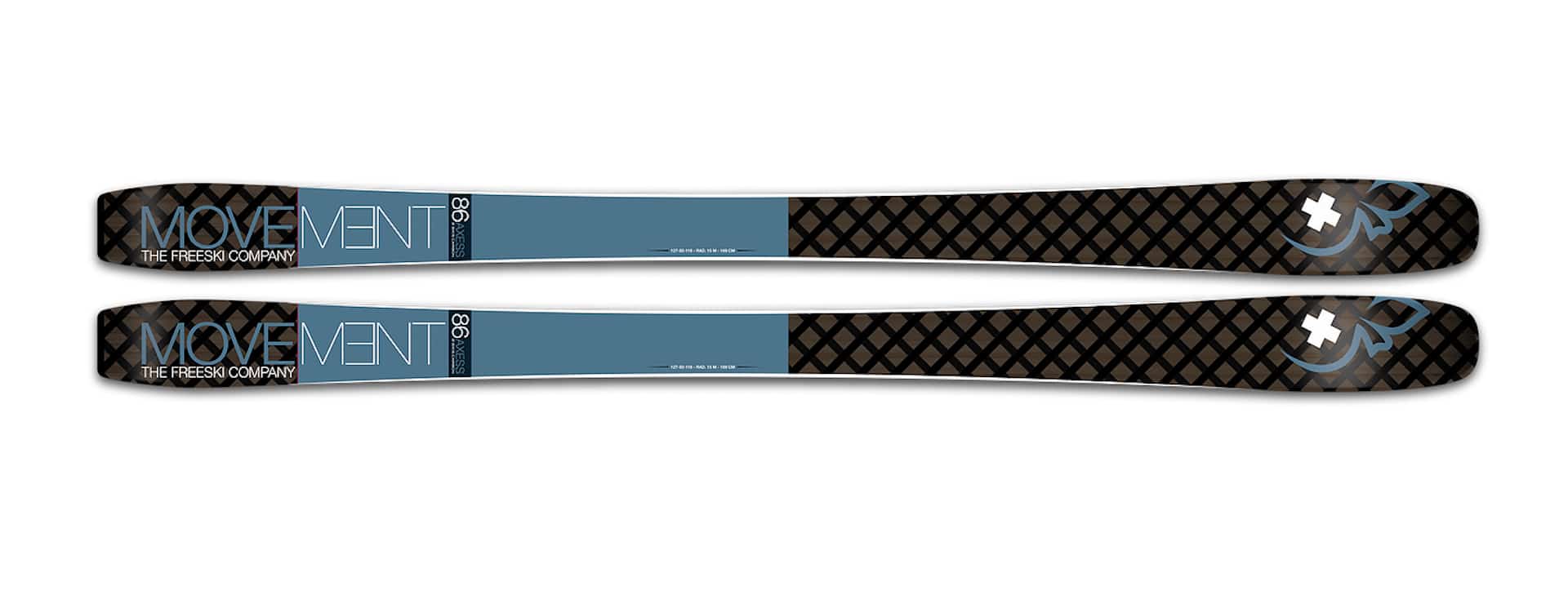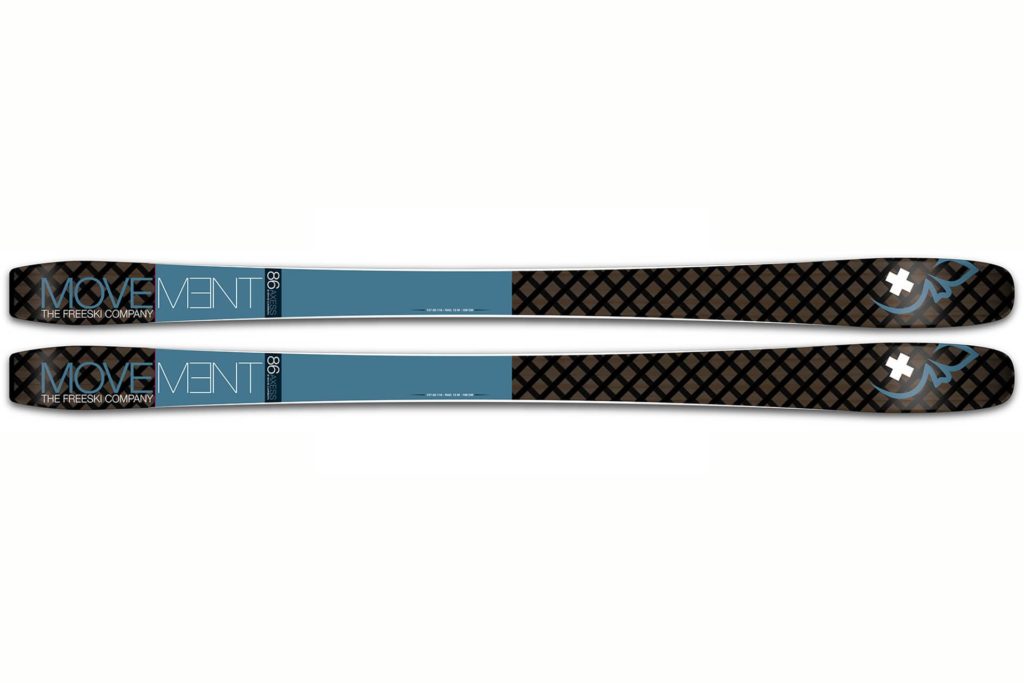Our test
Size tested : 169 cm
The Movement Axess 86 is a very light ski with carbon weaving showing through fore and aft. This Movement Axess 86 showcase this noble fiber with this transparent effect that the designers have mastered the ski’s lateral and longitudinal deformations.
At the end of our tests, we are slightly sceptical. Yes, it’s lightweight, its glide was judged irreproachable, the waist is versatile, and the radius is quite short and consistent.
In deep snow and chop, the rocker is pretty good, the active edge length is quite long. Flat pivoting is done with ease. But we don’t have the comfort that we were expecting from this type of ski. You need skill to control it, fortunately it’s light and quite wide to compensate. The tip carries out its role, absorbs, its filtration is a lot more limited than other skis we’ve tested. The ski sends vibrations up your legs.
The pivoting in ski touring is done 90% flat, in these conditions the Movement Axess 86 carries out its mission in a classic way. As soon as we ski on harder snow and we want to do faster sequencing, you’re disappointed. It’s very mono radius, as soon as you want to modify the radius or you want to over or understeer, the tip tends to wipe out, don’t overload it. If you push the tail, you need to be able to master the energy return, the spring. This is detrimental to the fluidity and comfort. This instability in fast sequencing requires concentration, finesse, and skill. Other skis that weigh the same have better rendering and aren’t as complicated. This Movement Axess 86 has very lightweight materials, but its behavior in old snow, avalanche mounds and chop require you to slow down.
In all transition zones: soft to hard snow for example, you mustn’t go too fast you need physical effort and balance. On other more constant terrain, when you are into your curve with the Movement Axess 86, you manage to conserve it, it’s efficient. If the snow stays homogenous you can really enjoy it and the sequencing with great sensations. But as soon as an element changes in the snow you search desperately for the quality of the fluidity you were just enjoying. The skier must adapt. You must juggle with: angulations, snow quality and curve radius.
The grip is very good, no criticism here. Sober graphic design. There’s carbon but we would like it to produce results in a wider range of snow conditions, that the ski would be more comfortable, that the technology would be more pertinent and efficient.
Technical specifications
SIDECUTS : 122 – 86 – 111 / 169 cm WEIGHT (of a ski without binding) : 1280 g / 169 cm RADIUS : 14,5 m /169 cm. ROCKER (front) : YES ROCKER (back) : YES CAMBER : classic AVAILABLE SIZES : 154 cm – 161 cm – 169 cm – 177 cm PRICE : 589 €
- Overall stability 70%
- Sequencing 60%
- Floatability 70%
- Sequencing on bumpy terrain 60%
- Difficult snow 50%
- Climbing ease 70%
- PISTE pivoting and curve initiation ease 60%
- PISTE carving 50%
- PISTE skidding turns 60%



